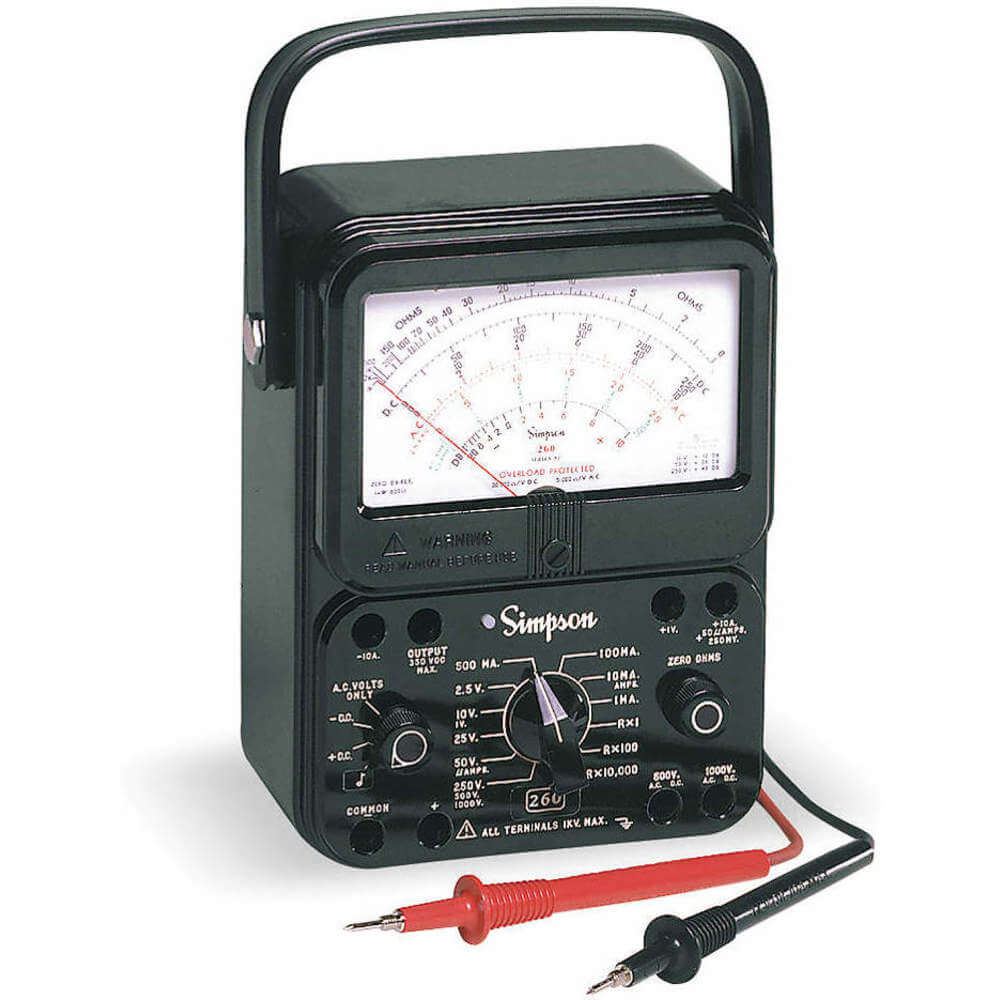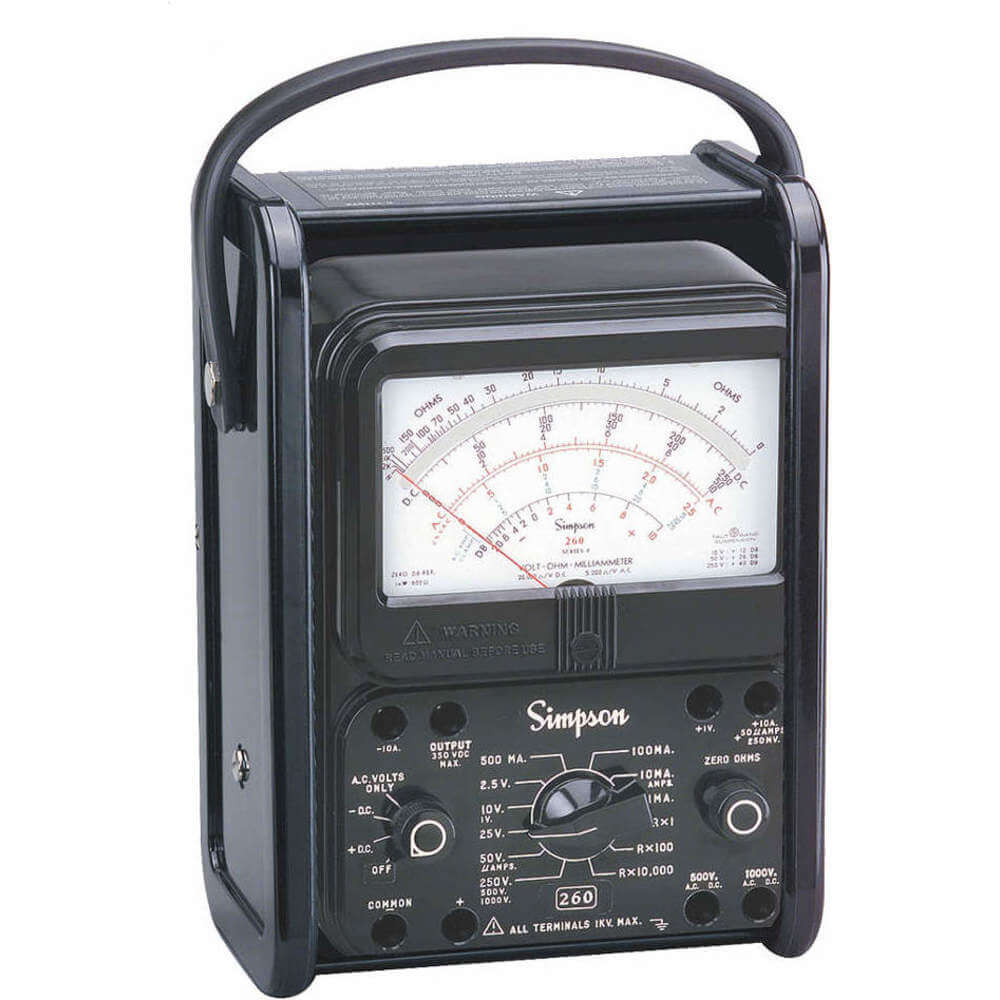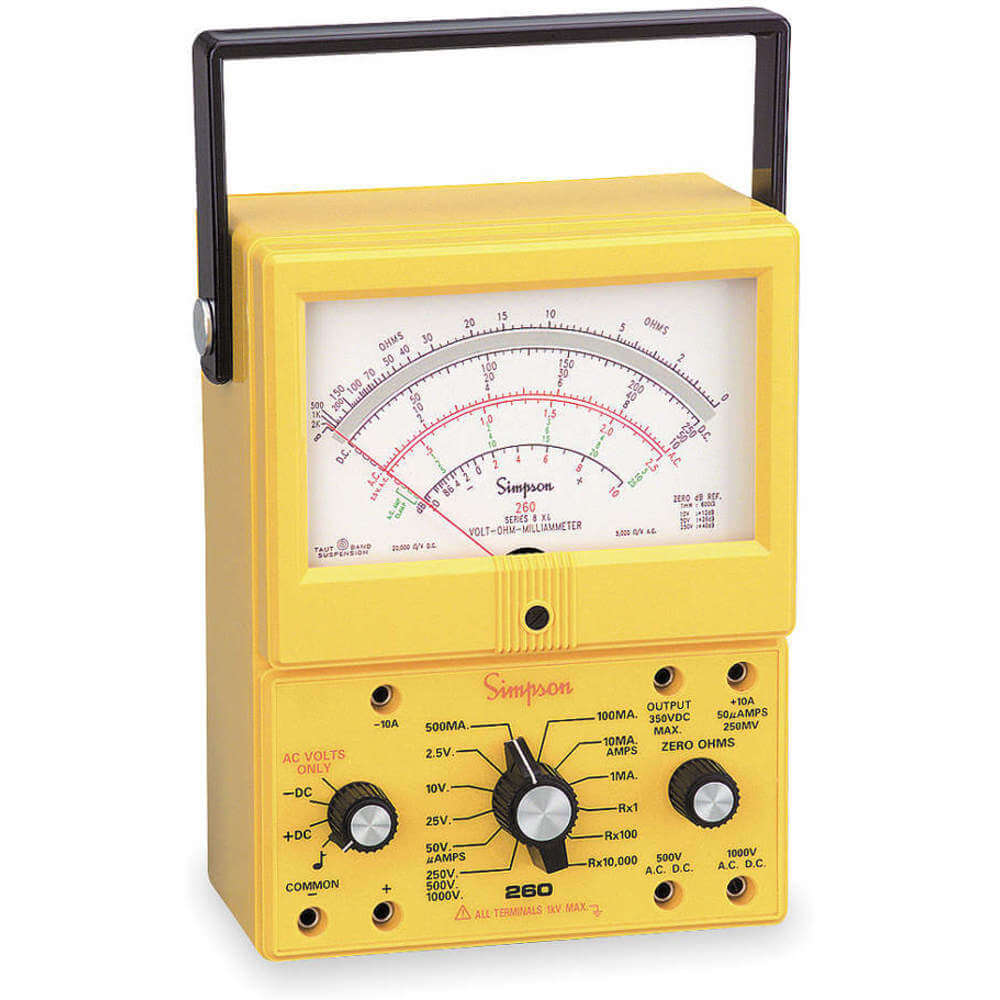Simpson multimeter 260-8 is used to measure electrical quantities, such as current, resistance, voltage, signal power & frequency in workshops, labs or field operations. The fundamental functionality comprises the measurement of resistance in ohms, potential in volts and current in amps. This Simpson multimeter 260-8 features added recalibrate overload protection circuit and audible continuity checking. It provides maximum instrument safety under overload conditions that might happen within the measuring capabilities of the instrument. Simpson multimeter 260-8 provides a self-shielding taut-band meter movement that offers superior shock resistance. This Simpson multimeter 260-8 comes with a heavy-duty phenolic case having fortified walls for superior durability. It features two easy to use knobs that manage the preference of ranges and functions.
Uses:
Simpson multimeter 260-8 is used to measure AC / DC voltage, AC / DC current, resistance & continuity. It is also suitable for checking diodes, measuring capacitance and testing batteries and frequencies.
Working Mechanism:
Simpson multimeter 260-8 is a permanent magnet moving coil (PMMC) type equipment that works on the principle of d'Arsonval galvanometer. So when the current passes through the coil, the permanent magnet produces a magnetic field. When current starts flowing through the coil, a deflecting torque works on the coil that turns it by an angle, so the pointer moves over a scale. A pair of hairsprings is connected to the spindle to deliver the managing torque.
Features:
- Simpson multimeter 260-8 provides two easy to manage knobs that control the selection of functions and ranges.
- It has more than 20 measurement ranges for DC voltage and current, AC voltage and current, resistance.
- This Simpson multimeter 260-8 has a big, tri-coloured dial with mirrored scale to avoid parallax error.
- It also features reverse sunken security jacks to avoid user and tool contact with electrical references.
- This Simpson multimeter 260-8 further provides self-shielding taut-band meter movement for greater shock resistance.
Standards and Approvals:
- Simpson multimeter 260-8 is UL 1244 listed to provide superior performance and user safety.
Frequently Asked Questions:
Q. What are the different types of analogue meters?
A. Some of the different types of analogue meters are direct current (DC), alternating current (AC) and direct and alternating current (DC/AC) analogue meters.
Q. What is the difference between a digital multimeter and an analogue meter?
A. The major difference between the two is the display. The analogue multimeter employs a needle to display the value, whereas a digital multimeter reflects the results as numbers on a digital screen.
Q. Are analogue multimeters capable of measuring AC?
A. Just like their digital counterparts, analogue multimeters can measure electrical outputs, such as current, voltage & resistance. As done with digital multimeters, the user must select a function & a corresponding range must be set.
Q. What is a digital multimeter?
A. Digital multimeters are instruments that calculate quantities like voltage, current and resistance. They display these measured values on a digital display, permitting them to be read comfortably and directly, even by new operators.
Q. What are analogue meters?
A. An analogue power meter is an instrument that features a printed display to show any electrical parameter, such as the energy consumed by a typical business or electrical device. It features an easy to read display and is also known as an electromechanical meter.
Q. What are the quantities that a multimeter can not measure?
A. Power, phase angle and frequency are some of the quantities that a multimeter can not measure.
Q. Why do technicians still use analogue multimeters today?
A. An analogue meter still has the advantage of being able to show minute changes very comfortably. Watching a needle swing up or down is a fair deal and comfortable to interpret rather than tracking the changing digits of a digital display.
 Change Country
Change Country



 Trade pricing is available for
Trade pricing is available for  Order Value should be £500+
Order Value should be £500+